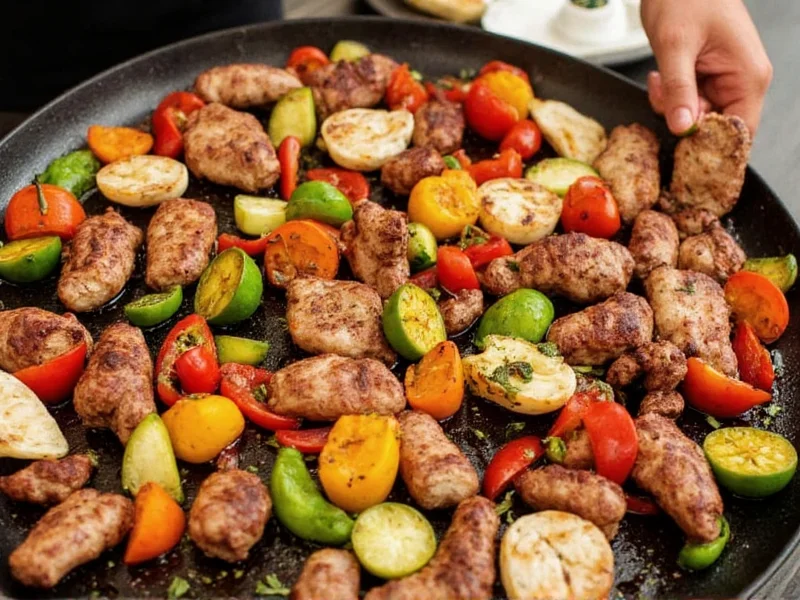Barbecuing vegetables transforms simple produce into smoky, flavorful delights that complement any outdoor meal. Unlike meats that require precise temperature control, vegetables offer more flexibility while delivering impressive results with minimal effort. The secret lies in selecting varieties that withstand high heat without becoming mushy or falling through grill grates.
Vegetables with dense structures and natural moisture content perform best on the barbecue. Root vegetables like sweet potatoes develop incredible sweetness when grilled slowly, while high-water-content options like zucchini and bell peppers achieve perfect char without drying out. Understanding each vegetable's unique properties ensures consistently excellent results every time you fire up the grill.
Top 10 Vegetables for Barbecuing and How to Prepare Them
Certain vegetables consistently deliver superior results on the barbecue due to their texture, moisture content, and natural sugars that caramelize beautifully over open flame. Here's a detailed breakdown of the best options and how to maximize their potential:
| Vegetable | Preparation Tips | Grill Time | Temperature | Flavor Pairings |
|---|---|---|---|---|
| Bell Peppers | Slice into quarters, remove seeds | 8-12 minutes | Medium-high | Balsamic, garlic, oregano |
| Zucchini | Cut lengthwise into 1/2-inch slices | 6-8 minutes | Medium | Lemon, thyme, parmesan |
| Eggplant | Slice 3/4-inch thick, salt to remove bitterness | 10-15 minutes | Medium | Basil, mint, tahini |
| Asparagus | Trim woody ends, toss in oil | 5-7 minutes | Medium-high | Lemon zest, garlic, almonds |
| Corn on the Cob | Soak in water 15 minutes, leave husk on or off | 15-20 minutes | Medium | Chili-lime butter, cilantro |
Mastering Vegetable Barbecue Techniques
Successful vegetable barbecuing requires understanding heat management and preparation methods. Unlike meats that benefit from direct high heat, many vegetables perform better with indirect heat or a two-zone fire setup. This approach prevents burning while allowing sufficient time for proper caramelization.
Proper cutting technique significantly impacts barbecue results. Thicker cuts work better for dense vegetables like sweet potatoes and beets, while delicate items like mushrooms and cherry tomatoes need protection from falling through the grates. Consider these preparation methods for optimal results:
- Skewering: Ideal for smaller vegetables like cherry tomatoes, mushrooms, and cubed zucchini. Soak wooden skewers for 30 minutes before use.
- Grill baskets: Perfect for sliced vegetables that might slip through grates. Toss frequently for even cooking.
- Foil packets: Excellent for delicate vegetables or combinations that might fall apart. Add herbs and a splash of liquid for steaming effect.
- Direct grilling: Best for sturdy vegetables with natural flat surfaces like portobello caps, eggplant slices, and corn.
Avoiding Common Barbecue Vegetable Mistakes
Even experienced grillers make preventable errors when barbecuing vegetables. Understanding these pitfalls ensures consistently delicious results:
Over-marinating delicate vegetables: High-acid marinades can break down tender vegetables like zucchini and asparagus. Limit marinating time to 30 minutes for these varieties. Heartier options like eggplant and portobello mushrooms can handle longer marination periods up to 2 hours.
Insufficient oiling: Vegetables need proper oiling to prevent sticking and enhance browning. Use a high smoke-point oil like avocado or grapeseed oil rather than olive oil, which can burn at high temperatures. Brush vegetables lightly just before placing them on the grill.
Moving too frequently: Allow vegetables to develop proper grill marks by resisting the urge to constantly flip or move them. Most vegetables need 3-5 minutes per side before they release naturally from the grates. If they stick when you try to flip, they need more time to develop those desirable char marks.
Flavor Enhancement Strategies for Barbecued Vegetables
Elevate your barbecued vegetables beyond basic seasoning with these professional techniques:
Post-grill finishing: Add delicate ingredients after cooking to preserve their freshness and texture. Sprinkle with flaky sea salt, fresh herbs, or a drizzle of high-quality olive oil just before serving. Acidic elements like lemon juice or vinegar should be added at the end to maintain their bright flavor profile.
Compound butters: Create flavored butters by mixing softened butter with herbs, spices, or citrus zest. Place a small pat on hot vegetables immediately after grilling for instant flavor infusion. Popular combinations include garlic-herb, lemon-dill, and smoked paprika butters.
Smoke infusion: For gas grill users, add wood chips to a smoker box to introduce subtle smoke flavor to vegetables. Hardwood varieties like apple, cherry, or pecan provide milder smoke that complements rather than overwhelms vegetable flavors.
Seasonal Vegetable Barbecue Guide
Maximize flavor by selecting vegetables that are in season for barbecuing. Seasonal produce offers superior taste, texture, and value while supporting sustainable eating practices:
- Spring: Asparagus, artichokes, green onions, and baby zucchini shine during spring barbecues. Their delicate flavors pair beautifully with light marinades and quick cooking times.
- Summer: Peak season for bell peppers, corn, eggplant, and tomatoes. These vegetables develop maximum sweetness and can handle longer grill times for deeper flavor development.
- Fall: Sweet potatoes, beets, and hearty squash varieties excel on the barbecue during cooler months. Their natural sugars caramelize beautifully over indirect heat.
- Winter: While outdoor grilling decreases, root vegetables like parsnips and turnips can still be barbecued with excellent results using extended cooking times over low heat.
Barbecuing vegetables successfully requires understanding each variety's unique properties and adjusting techniques accordingly. By selecting appropriate vegetables, preparing them correctly, and applying proper grilling methods, you'll transform simple produce into extraordinary barbecue highlights that even meat enthusiasts will rave about. The versatility of vegetables on the grill opens endless possibilities for creative outdoor cooking throughout the barbecue season.











 浙公网安备
33010002000092号
浙公网安备
33010002000092号 浙B2-20120091-4
浙B2-20120091-4